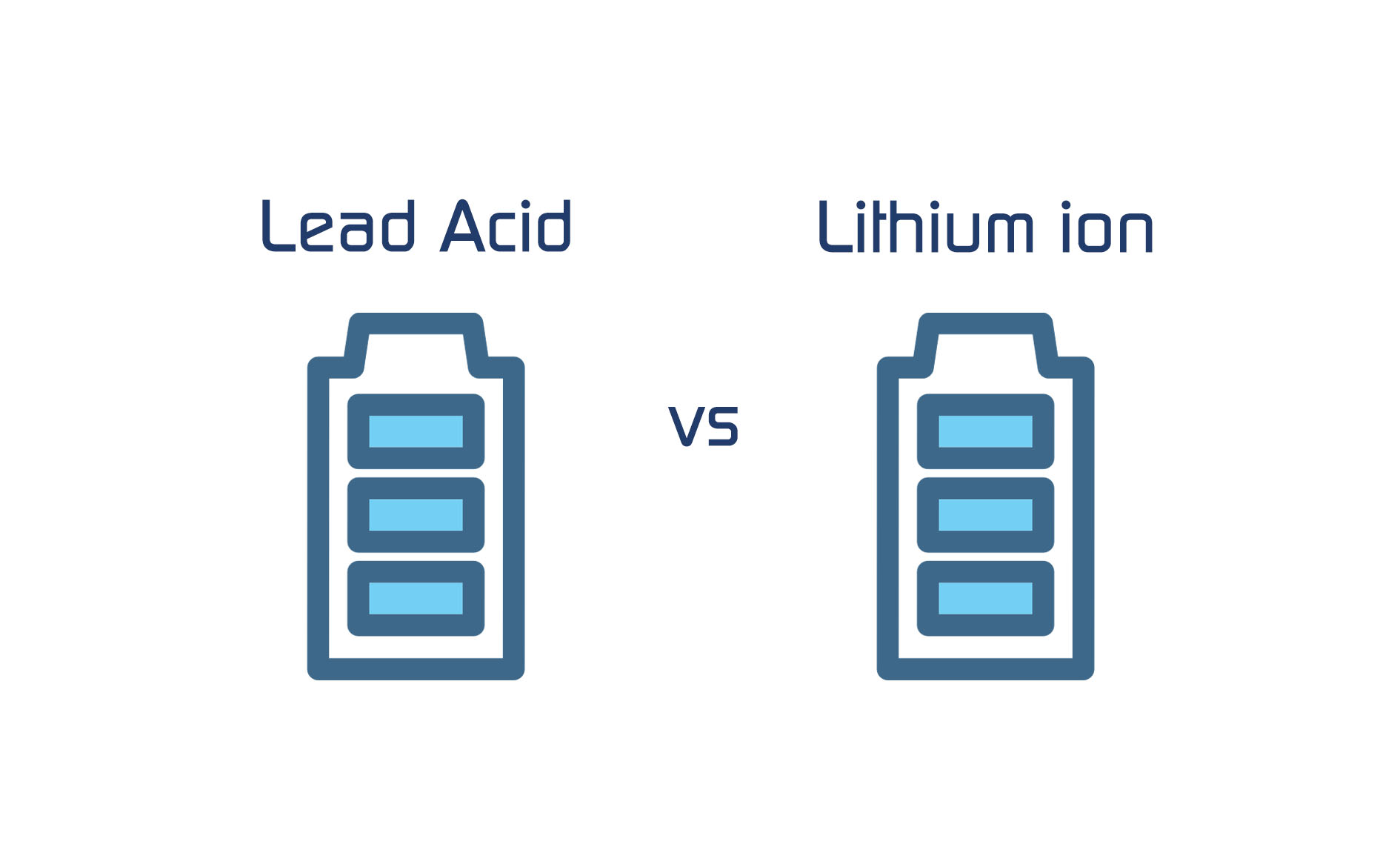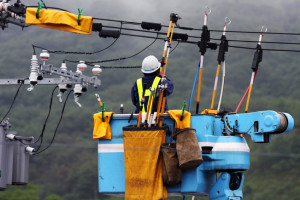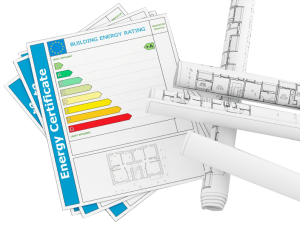

If you’re considering batteries for your solar system – whether you’re connected to the grid or you want to go completely off-grid – it’s important to understand which technology best fits your needs, lifestyle, and budget.
Traditionally, lead acid batteries (and in particular, Sealed Gel VRLA batteries) have been the standard when it comes to solar energy storage. After all, they’re a tried-and-tested technology that has been used worldwide for over 100 years. But with the recent emergence of lithium batteries – and particularly the Tesla Powerwall – there are new options which are smaller, more efficient, and have longer lifespans.
So, if you’re thinking about batteries, which technology should you use? Should you shell out for the newest lithium batteries? Or are you better off sticking with the traditional lead acid variety?
Well, let’s take an in-depth look and find out.
To help you better understand the two technologies, let’s start with a summary of each type:
Lead acid batteries were invented way back in the 1800s and remain the most popular type of rechargeable battery. They’re commonly used in vehicles, lighting, UPS systems, and energy storage applications. There are different types of lead acid batteries, but they generally contain a mixture of lead dioxide, sulphuric acid, and water (which you can read about in great detail here). They create a chemical reaction which can store and discharge electricity – but can also produce excess water and in some cases, gas.
Lead acid batteries are a proven technology, as well as cost-effective and reliable. But they are also heavy, may require regular maintenance, and can have limited lifespans.
Lithium batteries (also known as lithium-ion) were first developed in 1912, but they didn’t gain commercial momentum until the early ’90s. Smaller, lighter, and virtually maintenance-free, lithium batteries are used in phones, laptops, electric vehicles, and more recently, solar energy systems. Lithium batteries contain electrodes made of lightweight lithium and carbon, storing and exporting electricity without generating any external discharge.
Lithium batteries are generally more expensive than lead acid – but they are also compact, highly efficient, and simpler to install.
On first glance, the most obvious difference between lead acid and lithium batteries is their size and weight.
Lead acid batteries are heavy, bulky, and typically need to be stored on the ground or in special, reinforced cabinets. You’ll generally need to install them in a large garage, storage area, or shed. As some lead acid batteries discharge gas during operation, ventilation may be a factor that needs to be addressed in your initial consultation.
Lithium batteries, on the other hand, are far more compact, lightweight, and can be mounted on a wall as a sealed unit, or on the floor in a cabinet. Lithium batteries offer very high energy density, and kilo-for-kilo they can store up to six times more energy than a lead acid battery. Lithium batteries often do not require specific ventilation, although we recommend to install them in a location with adequate airflow.
In summary, while lead acid batteries are reliable and a great choice in many applications, lithium batteries have the advantage when it comes to size, weight, and flexibility of installation. For many suburban homes or compact dwellings, a slimline, wall-mounted lithium battery present an appealing and practical solution.
To help explain this one, it’s time for a quick exercise:
Suppose you have a 10-litre bucket, and you fill the bucket with water. Now, how much water can you take out of the bucket?10 litres, right? Of course, you are correct.
Now, suppose you have a 10 kWh (kilowatt-hour) battery, and you fill the battery with electricity. How much electricity can you take out of the battery?
10kWh, right? Well, in this case, not quite.
Batteries don’t work in quite the same way buckets do. It’s important to understand that the capacity of a battery is not the same amount of energy you can draw from it. You’ll often hear the term depth of discharge (DOD), and this refers to how much of the total capacity can be used before the battery needs to be recharged again.
Lead acid batteries have a somewhat shallow DOD, which is generally recommended around 20-30%. This means if your battery bank can hold 10 kWh of energy, you can only access 2-3 kWh of usable energy. You can draw more than this, but you risk damaging the batteries and shortening their lifespan. To this end, most systems have control systems to prevent this from happening.
Lithium batteries can be discharged much further – as much as 80% or in some cases even 100%. This means that with a 10 kWh battery, you’ll get at least 8 kWh of usable energy – or maybe even the full 10 kWh. The Tesla Powerwall 2, for example, permits a 100% DOD without any adverse effects on the battery lifespan or warranty. At Off Grid Energy, we recommend around an 80% DOD to extend the battery lifespan as long as possible.
In summary, lithium batteries easily have the advantage when it comes to how much electricity you can draw from them. With some batteries able to discharge all the way down to 0% capacity and recharge back up to 100%, they give you access to more usable energy, more often.
Another common term you’ll hear with batteries is round-trip efficiency. When you put energy into a battery and then take it out again, the battery system consumes some of that energy during the process. In a nutshell, round-trip efficiency refers to how much energy you can draw from the battery, compared to how much you put in.
As a quick example, if you put 5kWh of energy into your battery, and can only draw out 4kWh of usable energy, your battery has a round-trip efficiency of 80%.
As you may gather, the higher the percentage, the more efficient your system is – and the more usable energy you can access.
Lead acid batteries generally have a round-trip efficiency somewhere in the ballpark of 80%. This means that for every 10kWh of energy you put into your battery, you can draw 8kWh back out.
Lithium batteries offer an even higher round-trip efficiency, generally around 90% (such as the Tesla Powerwall 2). Lithium batteries are very efficient at storing and discharging energy, consuming very little in the process.
In summary, both battery types are efficient, but lithium has the edge in terms of how much stored energy is returned as usable energy. It’s a significant factor to consider, as even a 5% difference can equal thousands of kilowatt-hours of electricity over the lifetime of your system.
Another area in which lithium and lead acid batteries differ is the maintenance required to keep them working and healthy.
The maintenance requirements of lead acid batteries will vary, depending on the type. Flooded Lead Acid (FLA) requires the most maintenance, whereas Valve Regulated Lead Acid (VRLA) are sealed, highly autonomous, and don’t need much attention.
The maintenance for lead acid batteries can (but may not always) include:
This may sound like a lot of work, but once you understand what is required to keep your batteries healthy, it’s all relatively simple. In your initial consultation with a solar battery expert, you’ll get a clear understanding of your system’s needs, how often it requires maintenance, and which battery technology is best for you.
And so, how much work is needed to maintain lithium batteries?
Well, in a word – none.
Provided they are installed correctly and located an area with an acceptable temperature range (typically between 10°C and 30°C) they are maintenance-free. All lithium units contain a battery management system (BMS) which automatically monitors each battery cell for temperature, state of charge, life cycle, and a range of other factors.
In summary, lithium batteries require the least amount of maintenance. While many of the new VRLA lead acid batteries require very little attention, many of the new lithium batteries require none at all.
Now that you’ve read all about the two battery types, let’s compare some of their vital stats.
Bear in mind that these values are not absolutes – but an approximate guide to help you compare the two technologies.
In summary, lithium batteries are certainly making a strong case to become the new standard in home battery storage – at least at some point. With a smaller size, higher efficiency, and a greater depth of discharge, lithium offers advantages in virtually every area except for the up-front price. And with a dramatic reduction in lithium battery costs forecasted over the next decade, they may soon have the edge there was well.
For now, lead acid batteries – particularly the VRLA variety – are still a smart choice for off-grid applications, utilising a technology that has been refined over the last 150 years.
The final decision will ultimately come down to your application, your lifestyle, and your budget. With the advice of a battery system expert, you can weigh up the pros and cons of each, and work out which technology is the best fit for you.
If you’re considering batteries for an on-grid or off-grid solar system, we’re here to take the confusion out of the process. Off Grid Energy is an award-winning supplier of solar and battery systems, with a network of installation partners Australia-wide.
We offer an expert design and quote process, in which we assess your location, your usage patterns, and your unique energy requirements. Whether you want to reduce your dependence on the grid or become completely self-sufficient, the friendly team at Off Grid Energy will guide you through the entire process.
Contact the Off Grid Energy team via our contact page, or call us on 1300 334 839




Over-investment in network infrastructure, that we don’t actually need, is the real reason our electricity bills keep going up.

Off-Grid Energy Australia has completed hundreds of installations, covering every state and territory in Australia. We have also completed installations in New Zealand, Fiji, Vanuatu,

When living off-grid, you rely entirely on solar panels and batteries, so it’s critical to know exactly how much electricity you’ll need, and when you’re going to need it.

Off-Grid Energy is proud to have been selected as both an Authorised Reseller and Certified Installer for Tesla, and also been chosen as one of the first Authorised Installers for Redflow’s ZCell.
Electrical Contractor Licenses: VIC REC-31913, TAS 15608294, WA EC15901, SA PGE278927, NSW 279181C
We acknowledge the Traditional Owners of Country throughout Australia and recognise their continuing connection to land, waters and culture. We would like to specifically acknowledge the Kaurna, Wathaurong, Wonnarua, Wiradjuri and Boonwurrung people. We pay our respects to their Elders past, present and emerging.